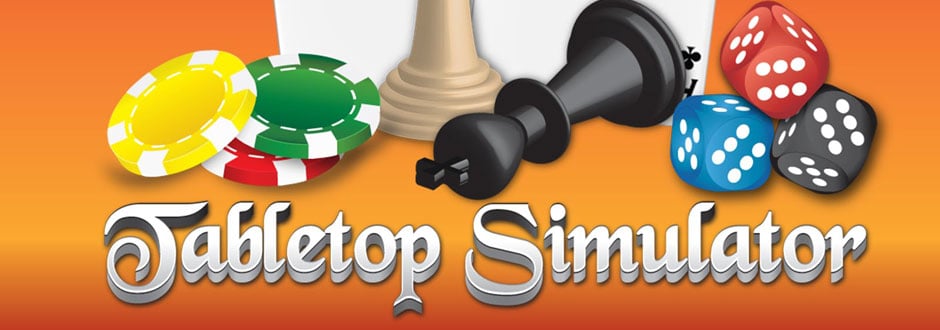There’s a new digital vs traditional debate raging in the gaming community. This time, it’s a row between fans of the popular Tabletop Simulator, and the followers of the traditional, physical games. But if you love board games and video games, why not try both? I’m not going to try to convert you to either side, so here’s what Tabletop Simulator has to offer, and you can make your own minds up.
Tabletop Simulator - An Introduction
Tabletop Simulator is a board game maker on Steam, and a pretty good (self-explanatory) simulator for a lot of board games. You can even build your own games using pieces from others, or just have a blast coming up with your own cards and counters.
You boot up a server, invite your friends and you’re away. It’s better if you’re on Discord or Skype during the whole process, otherwise you lose the plot and things get super confusing. The simulator is a great option if you and your fellow players are quite a distance apart, and provides a great way to stay in touch and relax, even if your mates live in Australia.
Tabletop Simulator - An Introduction
Tabletop Simulator is a board game maker on Steam, and a pretty good (self-explanatory) simulator for a lot of board games. You can even build your own games using pieces from others, or just have a blast coming up with your own cards and counters.
You boot up a server, invite your friends and you’re away. It’s better if you’re on Discord or Skype during the whole process, otherwise you lose the plot and things get super confusing. The simulator is a great option if you and your fellow players are quite a distance apart, and provides a great way to stay in touch and relax, even if your mates live in Australia.
Unlike app versions of games such as Trivial Pursuit, where you can tap the dice to roll and the game does most of the physical work for you, the simulator tries to retain most of the physics from playing a real-life board game. This means that you have to pick up your own darn cards, shuffle them with your scroll wheel, and move your counters around the board yourself. You lazy people.
This leads to some hilarity as you wrestle with some janky physics, so any games that require some level of precision (I’m looking at you Jenga) can be difficult to wrangle with. Picking your table, rolling your own dice (which you can colour to taste) and giving yourselves cool names that appear on the table before you are always fun, as is the drawing mechanic that allows you to draw as many dumb pictures as you like on the table, something you probably wouldn’t be able to do to a real one, unless your friends are pretty relaxed. You can even flip the table if the spirit moves you, with no damage caused and no pieces lost.
RPG Simulators
The simulator comes into its own for Dungeons and Dragons, and RPGs in general. Open up the chest, click the RPG option, and gaze in wonder at the living, breathing tokens available. From eagles to Ents, all the way through to the classic dragon, there’s something magical about watching the tokens bringing your characters and monsters to life.
If you select the ‘Large Table’ option, you can even upload your own image to the table’s surface, a good chance to use those maps you’ve been doodling in preparation. Or just use a pre-prepared grid, and draw the map as you go along. This makes a bit of a change from the popular Roll 20, which is built specifically for tabletop role-plays. Though on Roll 20 you can draw as you go, people tend to find it quite difficult at times, but the real difference is the aesthetics.
With the simulator, you can actually see the game around you, changing your position to see the map from different angles, providing an altogether more realistic experience. However, Roll 20 does give you the ability to see your team using webcam, an advantage that Tabletop Simulator hasn’t employed yet. Where Roll 20 takes itself seriously, Tabletop Simulator revels in its own ridiculousness, even recently releasing an update including ‘decals’ that can be added to your cards and board. Ramp up the tension with some bullet holes, or cover your opponents with cats. It’s up to you.
Final Thoughts
Now, I said I wouldn’t try and convert you. I won’t, but I will say that something is lost in digitising games. I found myself missing holding the physical cards, especially with a game like One Night Ultimate Werewolf, where most of the fun comes from leaning over your neighbour to sneakily swap cards.
There’s definitely something to be said for actually touching the pieces, dealing cards and accidentally knocking the board with your knee as you get up to get a snack. So try it out, but I think I’m going to go back to playing Dungeons and Dragons with a map drawn on the back of my last gas bill…









